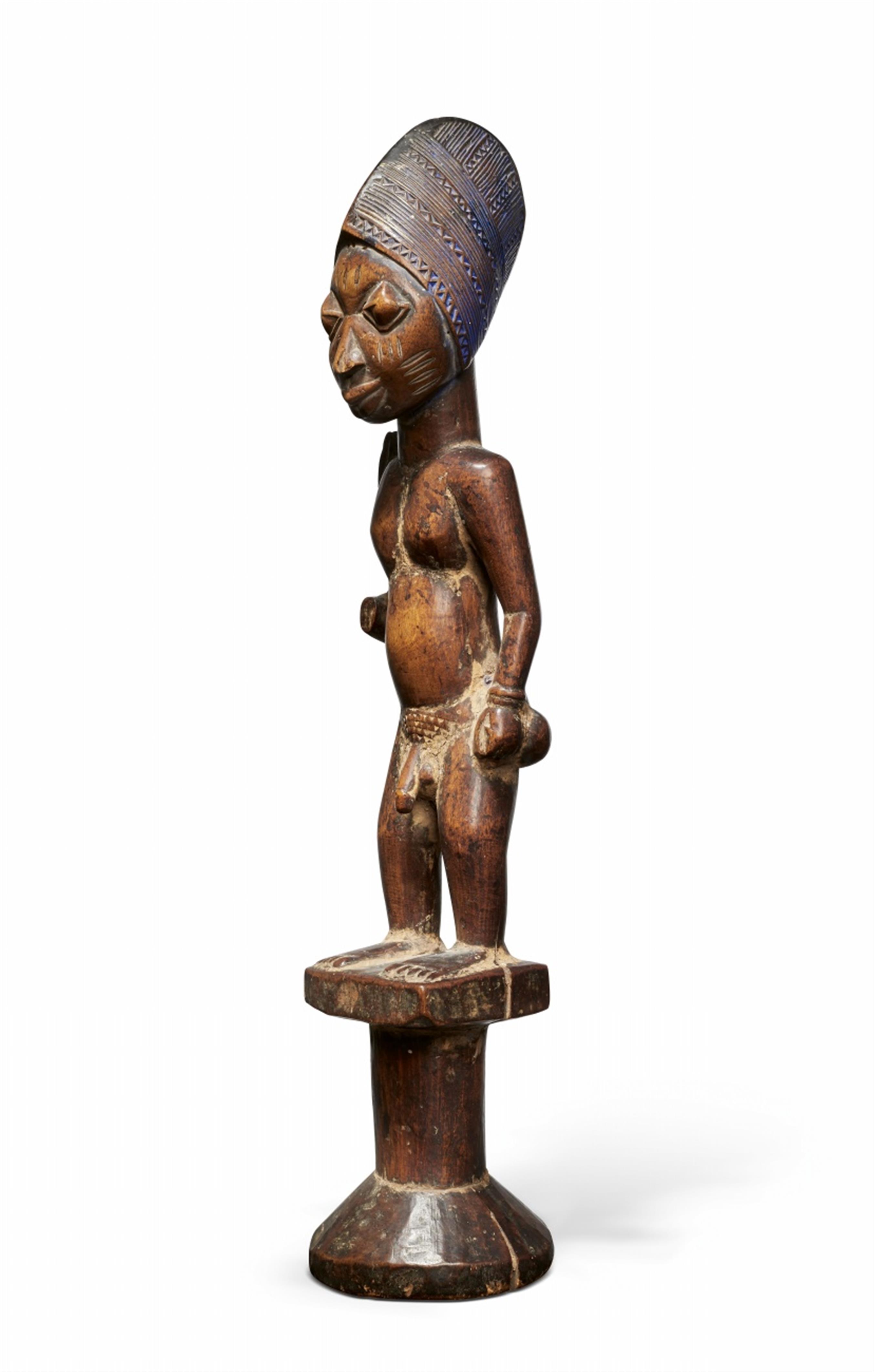AN IGBOMINA YORUBA FIGURE, FOR THE CULT OF ESHU, OGO ELEGBA
Nigeria
49 cm. high
William Fagg discusses this figure in Christie’s 1985 catalogue:
This ephebic youth — to use R.F. Thompson’s useful word (denoting that Yoruba artists’ subjects are conventionally depicted in the full bloom of youth-like Apollo) — is not an orisha or god never or very seldom directly represented in art — but rather an anonymous devotee, who, however, stands for the god in his unblemished ephebism.
He is the male member of an otherwise identical pair (and Professor Armstrong used to say how bitterly he regretted, for lack of having cash let the female slip through his fingers in a Paris gallery in 1969). They are worn in the dance hung about the neck of the priest of Eshu.
The piece was taken at first for a oshe shango rather than an ogo elegba, the remaining extremity of the damaged club on the right shoulder having been interpreted as a very small, and misplaced neolithic axe. But the oshe shango do not come in pairs. Indeed it would be a most fortunate thing if the female could be found and united with the male for the pair would be one of the finest in existence.
The Igbomina style, and especially that of the village of Oro, is beginning to enjoy a belated fame as one of the supreme carving centres of Yorubaland. Most of the other major sculptural centres are based on the main population concentrations (not an imported concept, but a characteristic trait of Yoruba culture since the apogee of Ife), such as Oyo, Abeokuta, Ogbomosho, Owo, Oshogbo or Iseyin. But Oro works were until recently (notably in the catalogue of Fagg and Pemberton, 1982, where as many as eight Oro or Ijomu pieces were identified), generally listed as ‘Yoruba’ or perhaps ‘central Yoruba’ — echoing Kenneth Murray’s dictum that the more proficient Yoruba sculptors become, the more they approach the ideal style of Yoruba sculpture. Professor Armstrong seems to have had a special affinity for the Oro style, long before it was publicly named.
Provenienz
Acquired in Paris, 1969
Dr. Robert Plant Armstrong (1919-1984), Dallas
Christie's, New York, 15 May 1985, lot 44
Christie's, Paris, 8 December 2004, lot 161
A Private European Collection
Literaturhinweise
Armstrong, R.P., "My Collection", in African Arts, Vol.VII, no.3, 1974, p.42, fig.9.
Armstrong, R.P., ”Wellspring: On the Myth and Source of Culture", in African Arts, 1975, pl.21.
Armstrong, R.P., The Powers of Presence. Consciousness Myth and Affecting Presence, Philadelphia, 1981, pl.10.
Bassani, E. (Ed.), William B. Fagg: “One Hundred Notes on Nigerian Art from Christie’s Catalogues 1974-1990”, Quaderni Poro, no.7, Milan, 1991, pl.87.

